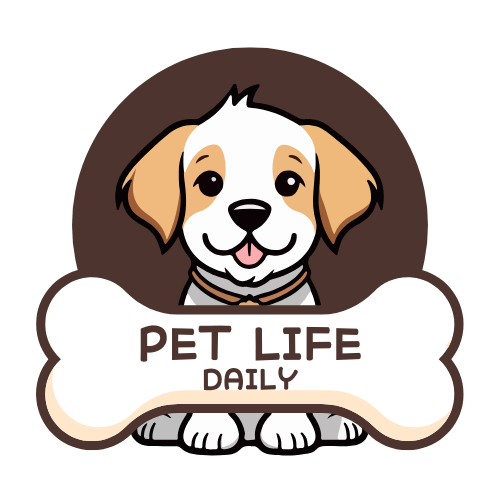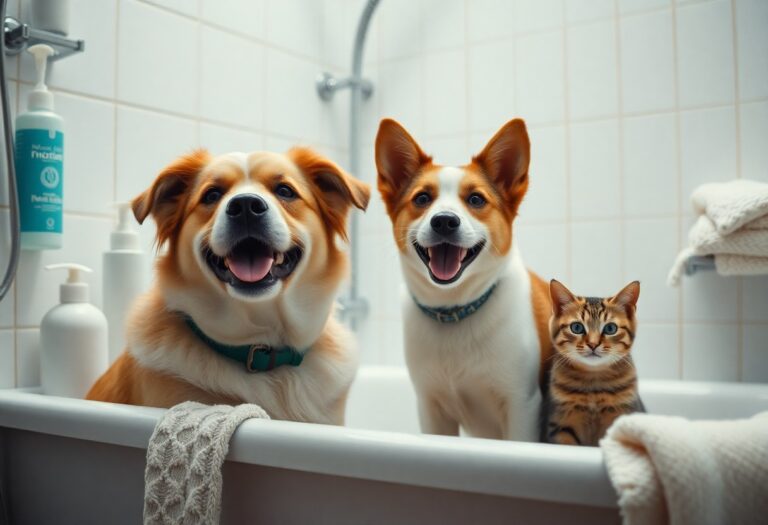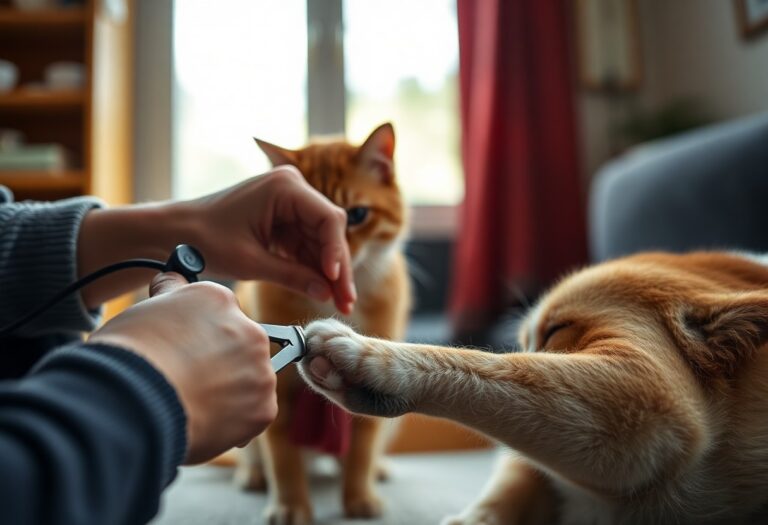There’s a lot to consider when bringing a new pet into your home, especially when it comes to their health. Pet insurance can be a significant safety net, protecting you from unexpected medical expenses that can arise from accidents or illnesses. Understanding how pet insurance works, what it covers, and how it can benefit your four-legged family member is crucial. This knowledge not only helps you make an informed decision but also ensures your pet receives the best possible care when they need it most.
Decoding Pet Insurance Policies
What Your Premiums Really Cover
Your pet insurance premiums typically cover a range of medical expenses related to your pet’s health care. Most policies include accident-related injuries, illness treatment, and routine care options, though coverage can vary widely. For instance, a comprehensive policy might cover surgeries, hospital stays, and even alternative therapies like acupuncture or chiropractic care. On the other hand, less comprehensive plans may only cover accidents and certain illnesses, leaving you to shoulder the costs of regular check-ups or vaccinations. Being aware of what your premiums truly encompass can significantly impact your long-term budgeting as a pet owner.
In addition to the standard medical expenses, some policies offer add-ons or extras such as behavioral therapy and prescription medications. Let’s say your pet develops anxiety and requires therapy sessions; this could add an unexpected financial burden if not covered by your policy. Therefore, examining what’s included and any additional options available can help tailor your insurance plan to your specific needs.
The Fine Print: Waiting Periods and Exclusions
Every pet insurance policy comes with its own set of stipulations regarding waiting periods and exclusions. Waiting periods are the timeframe between when you purchase the policy and when you can start making claims for certain conditions. Usually, these waiting periods can range from a few days for accidents to several weeks or even months for illnesses. If your pet develops a health issue during this waiting period, you may find yourself in a vulnerable position, having to cover those costs out-of-pocket.
Exclusions refer to specific conditions or treatments that insurance will not cover. Many plans exclude pre-existing conditions, meaning if your pet was diagnosed with an ailment before the policy took effect, any related treatment would not be reimbursable. Additionally, some insurers may have exclusions for hereditary or breed-specific conditions. Understanding these limitations upfront can help you avoid unexpected costs down the line.
Further exploring the fine print in your policy can provide greater insight into your coverage. Policies may also differ in their approach to dental and preventative care, so clarifying these aspects can be imperative in ensuring a healthy experience for both you and your furry friend. By dissecting every detail, you can make an informed decision and potentially save yourself from financial pitfalls later on.
Assessing the Value of Pet Insurance
The Cost-Benefit Analysis for Pet Owners
Evaluating the financial implications of pet insurance involves understanding both the costs associated with premiums and the potential benefits in times of need. Consider the average annual premium for pet insurance, which can range from $300 to $600, depending on your pet’s breed, age, and pre-existing conditions. On the flip side, the average veterinary emergency service can exceed $1,000 easily. If your pet were to face a major health issue, such as a serious accident or chronic illness, insurance can alleviate the burden of unexpected costs. The cost-benefit analysis ultimately hinges on how much you feel comfortable risking when it comes to your pet’s health and whether you want to budget for unforeseen expenses.
Comparisons: Insured Pet Owners vs. Uninsured
Pet owners with insurance experience significantly different outcomes compared to those without it. A study by the American Veterinary Medical Association highlighted that only about 60% of insured pet owners faced unexpected care costs above $750 in any given year, in contrast to 80% of uninsured pet owners. This data illustrates how insurance can help shield you from large financial burdens. Furthermore, insured pets tend to receive treatment sooner rather than later, contributing to better overall health outcomes. The choice between being insured and uninsured not only affects your wallet but can also impact your pet’s wellbeing and longevity.
Comparative Table of Costs and Benefits
| Insured Pet Owners | Uninsured Pet Owners |
|---|---|
| More likely to pursue preventative care and treatment | Tend to delay or avoid treatment due to costs |
| Lower out-of-pocket expenses during emergencies | High out-of-pocket costs can lead to tough financial choices |
| Access to a wider range of veterinary services | Limited access to care due to financial constraints |
| Peace of mind regarding medical costs | Increased anxiety over financial decisions related to pets |
Understanding the financial differences between insured and uninsured pet owners can illuminate the tangible benefits of investing in a policy. Insured owners generally engage more educators and comprehensive care, fostering a stronger relationship with their veterinarian. In contrast, uninsured owners may face tough decisions that put both their finances and their furry friends’ health at risk. The bottom line is that the peace of mind and access provided by insurance underscore its value in the long-term care of your beloved pet.
Navigating Claims: A Step-by-Step Guide
| Step | Description |
|---|---|
| 1. Visit a Veterinarian | Schedule an appointment with a veterinarian and ensure that your pet receives the necessary care. Keep all invoices and notes from the visit. |
| 2. Fill out Claim Form | Obtain your insurance provider’s claim form, complete it accurately, and collect any supporting documents that may be needed. |
| 3. Submit Your Claim | Send the completed claim form along with the required documents to your insurance company, either online or via mail, depending on their guidelines. |
| 4. Wait for Processing | Your claim will be reviewed by the insurance company. They may contact your veterinarian for additional information, which can take several days. |
| 5. Receive Your Reimbursement | After processing, you will receive reimbursement according to your policy coverage, which may either go directly to you or the veterinarian. |
Common Pitfalls During the Claims Process
Navigating the claims process can often be overwhelming, and many new pet owners encounter missteps that can delay or result in denied claims. One common issue arises from incomplete documentation. Submitting a claim without all necessary receipts, notes, or forms can lead to processing delays. Always double-check your paperwork to ensure everything is included as required by your insurance provider. Additionally, failing to understand your policy’s specific exclusions—like certain pre-existing conditions—can also result in unexpected denials that leave you financially responsible.
Another pitfall is the timing of your claim submission. Some insurance policies have strict deadlines for filing claims post-treatment; missing these windows can void your chance for reimbursement. Moreover, new pet owners often overlook follow-up questions from the insurance company, which may slow down the process even further. Being proactive and responsive will help avoid these common traps and ensure a smoother claims experience for your pet.
Tips for a Successful Claims Experience
Being organized is a key component of submitting a successful claim. Start by keeping all of your veterinary records, invoices, and receipts in one place to make it easier to access important documents when needed. Maintain a claim log with details about when documents were submitted and the status of your claim. This will not only help you stay on top of the process but also assist in communication with your insurance provider.
Understanding your policy’s specific details can greatly enhance your claims experience. Familiarize yourself with what is covered under your plan, any deductibles, and the claims limits. If there are any terms you’re unsure about, it’s worth contacting your provider for clarification before any claims arise. The more you know about your plan, the better prepared you’ll be in managing your pet’s health without unexpected costs.
- Stay organized by keeping all records in one place.
- Understand your policy to avoid surprises when filing a claim.
- Communicate proactively with your insurance provider if questions arise.
The journey through the claims process doesn’t have to be daunting if you approach it methodically. By maintaining meticulous records and fully grasping your policy details, you can streamline the experience and alleviate much of the stress that comes with pet healthcare.
- Double-check documentation to avoid delays or denials.
- Submit claims on time to adhere to your policy’s guidelines.
- Follow up promptly on any requests for additional information.
With attention to these areas, you’ll greatly improve the likelihood of a successful claims experience, ultimately benefiting you and ensuring your beloved companion stays healthy and happy.
The Future of Pet Insurance and Emerging Trends
The landscape of pet insurance is evolving rapidly, driven by technological innovations and the changing needs of pet owners. Current trends indicate a shift toward more comprehensive coverage options that address not only emergencies and illnesses but also preventative care. As more pet owners recognize the importance of health care for their pets, insurers are adapting their offerings to include services that enhance overall pet wellness. These emerging trends not only provide peace of mind for pet parents but also reflect a growing awareness of the holistic approach to pet health.
The Rise of Telemedicine in Pet Health Insurance
Telemedicine has gained significant traction in both human and pet health care, with many insurers now offering virtual consultations as part of their policies. You can connect with licensed veterinarians via video chat, which makes accessing care more convenient, particularly for minor health concerns or follow-up questions after a visit. This method not only saves time but also reduces the stress pets may experience from vet visits. For example, some telehealth services allow you to receive advice and treatment for common ailments, potentially preventing a costly in-person appointment.
Moreover, the integration of telemedicine into pet insurance adds a layer of flexibility and accessibility many pet owners appreciate. With pet care becoming more proactive in nature, telemedicine facilitates early diagnosis and intervention, which can ultimately lead to reduced costs and improved health outcomes. As you embrace technology, taking advantage of these services can become a regular part of your pet care routine, ensuring your furry friend receives timely attention even from the comfort of your home.
Innovations in Coverage: Wellness Plans and More
Recent developments in wellness plans have expanded what pet insurance can cover beyond accidents and illnesses. Many providers now offer comprehensive wellness packages that include routine check-ups, vaccinations, dental care, and even grooming. These plans are designed to help you manage the ongoing expenses associated with preventative care, making them a popular choice among cost-conscious pet owners. For instance, a well-planned wellness policy can result in savings not just on unexpected vet bills but also the regular costs incurred from routine care.
In addition to wellness plans, some insurers are starting to offer innovative options like alternative therapy coverage that includes acupuncture, chiropractic care, and even behavioral therapy. As the health and wellness mindset continues to grow, incorporating these services can align perfectly with your philosophy of maintaining your pet’s health as a whole. By choosing a policy that addresses these emerging healthcare practices, you position yourself to provide comprehensive care tailored to your pet’s unique needs.
The Emotional Considerations Behind Pet Insurance
How Insurance Choices Reflect Your Pet Parenting Style
Your choices regarding pet insurance often mirror how you approach caring for your furry family member. If you prioritize comprehensive care and want access to cutting-edge treatments, a policy with a higher premium and extensive coverage might be right for you. On the other hand, a more budget-conscious approach could lead you to consider basic plans that cover imperative care only. Each choice sends a clear message about your values as a pet parent—whether you lean towards recognizing your pet as a family member deserving of the best medical attention or take a more cautious stance in your pet care philosophy.
Peace of Mind: Financial Safety Nets for Unexpected Emergencies
Having pet insurance can provide substantial comfort during crises, ensuring you’re not faced with difficult financial choices when your pet requires urgent care. Unexpected vet visits can quickly escalate into significant expenses; for instance, a sudden illness may lead to treatments costing thousands of dollars. With adequate coverage, you can focus on what truly matters—your pet’s health—rather than worrying about how to pay for necessary medical interventions.
Pet insurance functions as a safety net, allowing you to seek treatment without the overwhelming burden of potential costs. Policies that cover a variety of services, from routine wellness checks to emergency surgeries, help mitigate financial strain. For example, a plan with a modest deductible can protect you from exorbitant costs, providing you with confidence that your budget won’t be drastically affected during troubled times.
Final Words
The information you have gathered about pet insurance will serve as a valuable tool as you navigate the responsibilities of pet ownership. Understanding the different types of coverage, the importance of policy limits, and the benefits of preventive care can empower you to make informed decisions that align with your pet’s health needs and your financial situation. As a new pet owner, ensuring that you have the right insurance can provide peace of mind and help mitigate the impact of unexpected veterinary expenses.
When identifying the right pet insurance policy, take your time to compare options and consider the specifics of your individual pet’s needs. Evaluate providers, coverage options, and customer reviews to find the best match for your situation. By investing in pet insurance, you are not just covering potential costs; you are investing in your pet’s health and well-being for the long term, allowing you to focus on creating joyful memories together.







